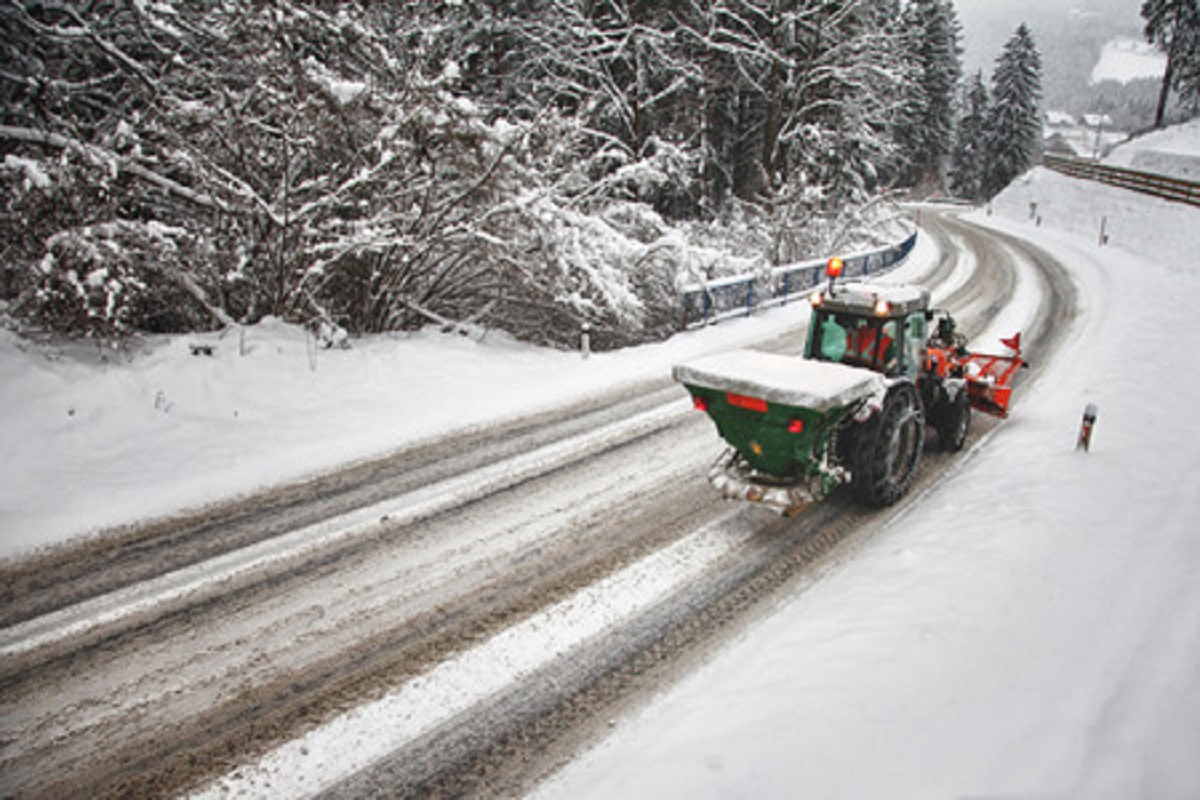When winter comes rolling in, it isn’t just snow and ice that drivers should be worried about. There is also the issue of salt when it is used by road departments to help melt ice on the roads, with the mineral potentially wreaking havoc on vehicles. With that likelihood getting closer as the days grow colder, here is what can be done to keep cars from developing rust brought on by road salt.
Freezing Temperatures
In regions of the U.S. that see winters with freezing temperatures, residents know that, in addition to needing to heat their vehicles up at dawn, icy roads are a consistent inconvenience. Fortunately, the chemical reaction between salt and ice can keep both sidewalks and roads ice-free during winter. A sand-salt mixture is often spread on the roads before an ice/snow storm or afterward. The salt lowers the freezing point of the water, causing formed ice to melt despite the air being below freezing, whereas the sand keeps the salt put and provides some traction. While road salt does increase safety, one drawback is it can cause serious undercarriage and body damage to vehicles unless extra precautions are taken.
Preventing Damage from Road Salt
Road salt can cause corrosion and rust on vehicles, and since the undercarriage is exposed, this area has the greatest risk of deterioration, including the muffler, the exhaust system, the coil springs, the subframe, and the hydraulic brake system. Rust on any essential vehicle parts can be incredibly dangerous, which is why it’s critical that car owners take precautions to protect their vehicle if they live in areas that use road salt. Mother Nature cannot be fought, but there are some steps drivers can take prior to and during winter to prevent damage to their vehicles, including the following:
- Wax the vehicle before winter: The undercarriage has the greatest risk, but give the whole car a coating of wax prior to bad weather setting in.
- Avoid plow trucks and puddles: Puddles may have a lot of salt in them, and driving your car behind plow trucks means you’re driving into fresh salt.
- Pretreat the undercarriage: Many collision shops provide oil solution pretreatments, which is sprayed onto a car’s exposed parts and prevents water and salt from sticking to them.
- Wash the car after snow storms: This way you’re getting salt off the car immediately.
- Use under spray: Washing vehicles isn’t enough—the undercarriage must also be cleaned. Find a hand wash or drive-through car wash that will spray under the car.
- Pre-winter inspections: A quick mechanic appointment for once-overs is great for ensuring you head into the winter season with a fully-functional, safe vehicle. Any indication of wear and tear must be addressed prior to temperatures dropping.
Look for Warning Signs
Modern vehicles are good for letting drivers know when something is wrong. When you see the “brake warning” dash light turn on, don’t drive the vehicle. Have it immediately towed to the mechanic to have the brake system checked. It’s also important to remember potential dangers are not always obvious, but if you’re up-to-date on vehicle maintenance, you’re already ahead of the curve.
Think you or someone you know is in need of Behind the Wheel Training? Training Wheels is a Pomona driving school specializing in teaching new teen drivers how to stay safe on the road. For more information on our lessons, please click here.
Copyright: robsonphoto / 123RF Stock Photo

